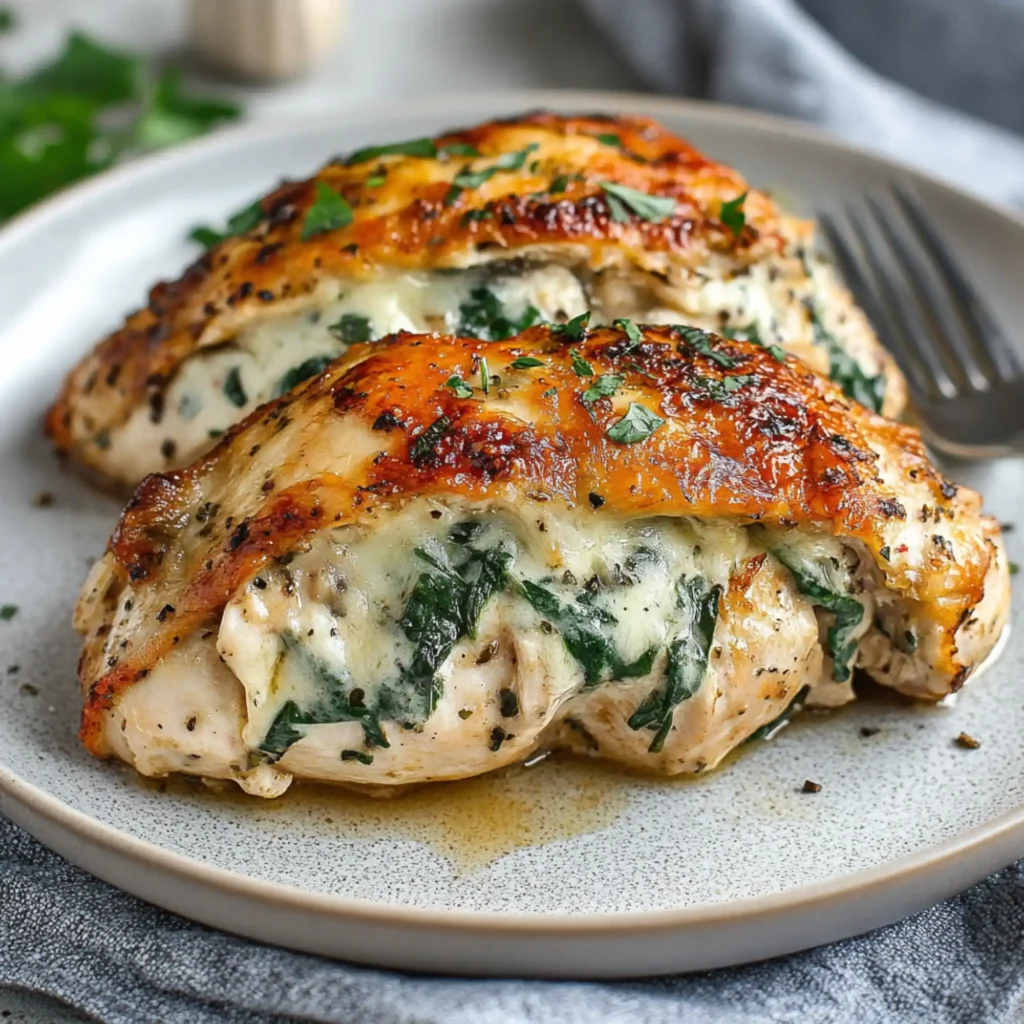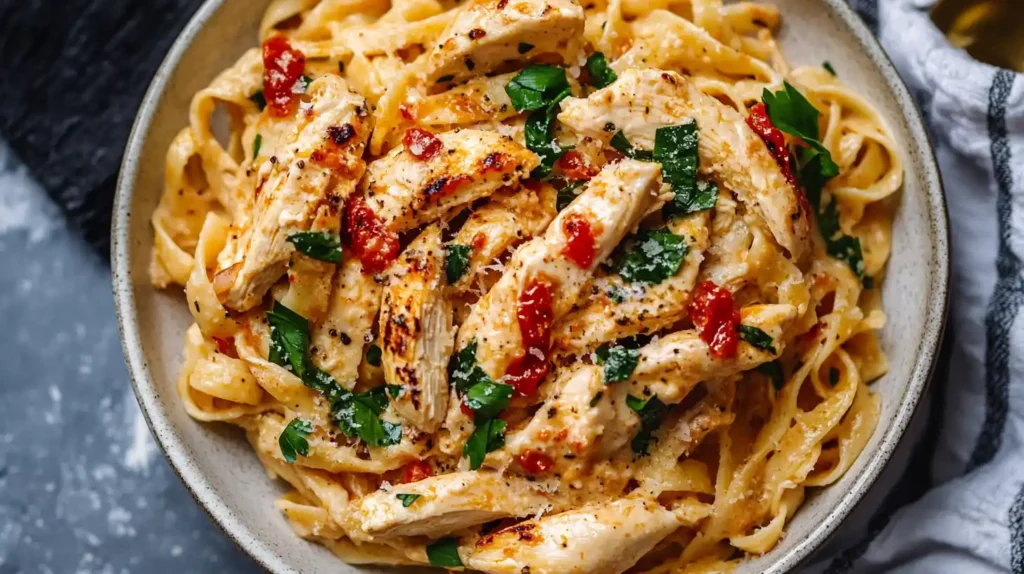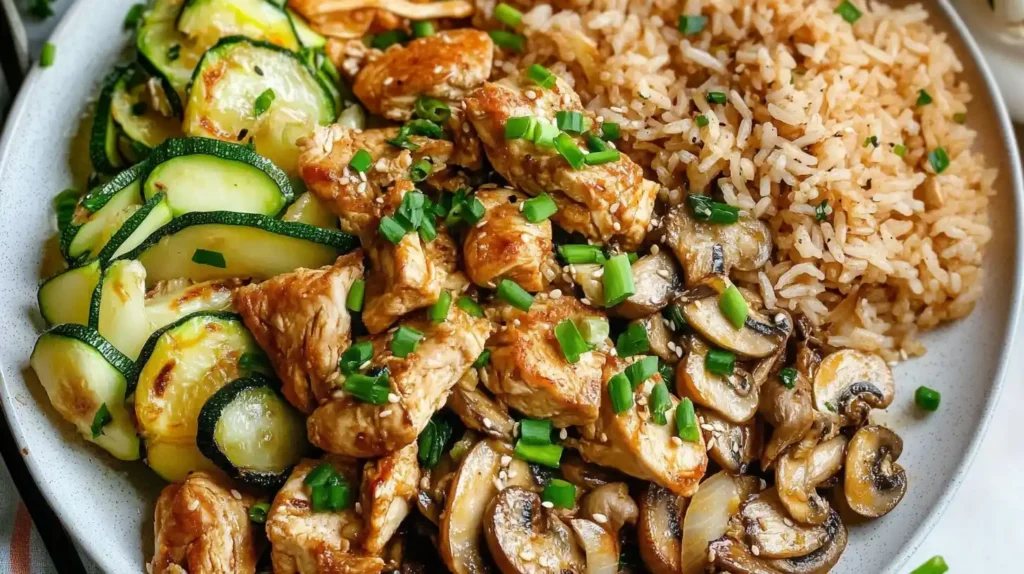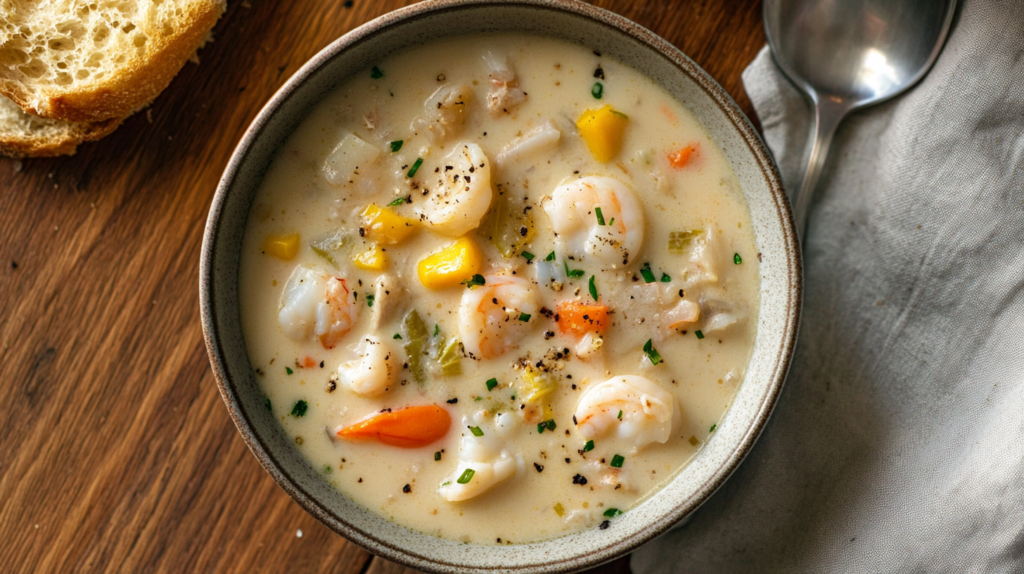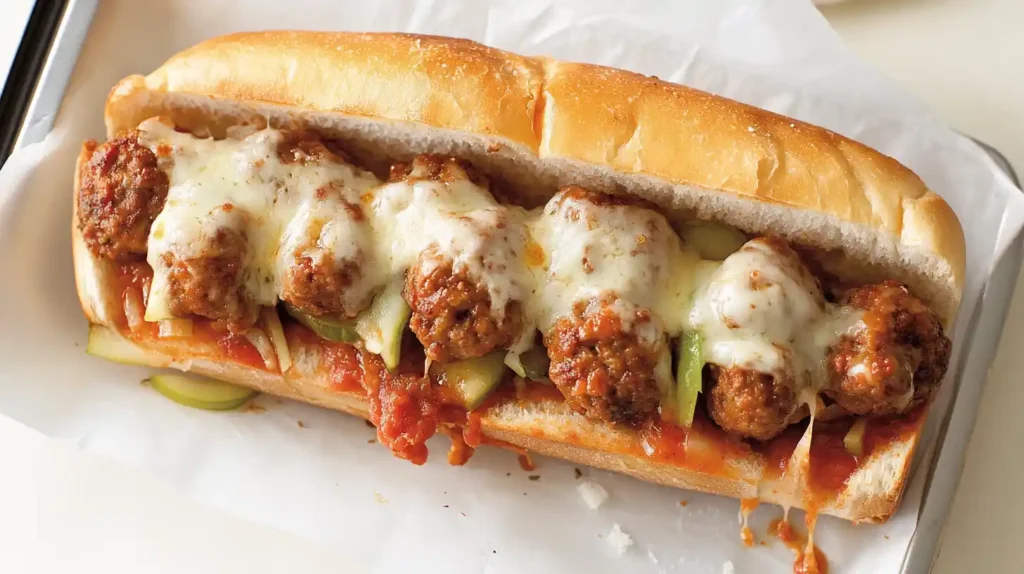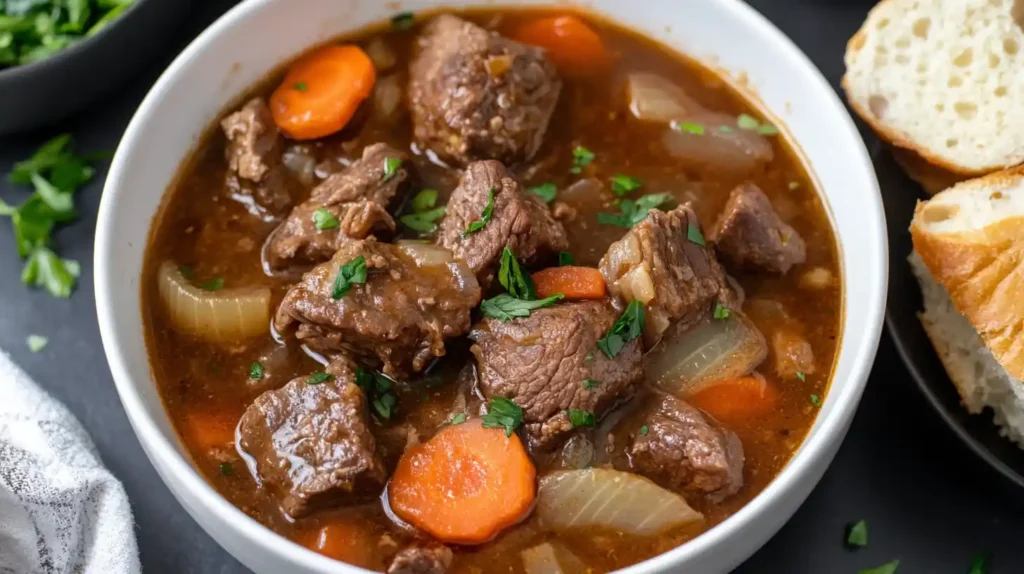Squid ink seafood pasta is a bold twist on classic Italian cooking. This black pasta, known as nero di seppia, combines ocean-rich flavors with striking visual appeal. Once a specialty of coastal Italy, it’s now a trendy dish in American kitchens.
You’ll discover how to craft this dish in under 45 minutes—no professional skills required. The recipe balances squid ink’s earthy depth with fresh seafood, creating a dish that’s as impressive as it is simple to prepare.
Beyond its dramatic looks, squid ink pasta delivers a unique umami taste and velvety texture. Whether paired with shrimp, clams, or mussels, this squid ink pasta becomes a memorable meal that’s perfect for weeknight dinners or weekend gatherings.
What is Squid Ink Pasta?
Squid ink pasta, known as nero di seppia in Italian, is a dark, velvety pasta. It’s made with squid ink. This dish is a mix of seafood and pasta, making it a stunning meal.
Learning what is squid ink pasta means knowing its history. The italian name for squid ink pasta, nero di seppia, shows its roots in Mediterranean fishing communities. Fishermen used squid ink to make tasty dishes, and now it’s loved for its rich taste and cultural background.
The Origin of Nero di Seppia
Mediterranean coastal areas like Sicily and Sardinia made nero di seppia famous. Fishermen turned squid ink into pasta long ago. This nero di seppia pasta is now a sign of Italian tradition and resourcefulness.
Nutritional Benefits of Squid Ink
Squid ink does more than add color—it’s nutritious. It has antioxidants to fight oxidative stress and minerals like iron for energy. It also has copper to boost immunity. So, what is squid ink pasta is not just a novelty; it’s good for you too.
How Squid Ink Affects Flavor
Surprisingly, nero di seppia pasta doesn’t taste fishy. It has a briny ocean flavor with a hint of sweetness. The ink’s umami adds depth to seafood dishes without being too strong. Its taste is complex yet mild.
Essential Ingredients for Squid Ink Seafood Pasta Recipe
Starting a squid ink pasta recipe means picking the right ingredients. Choose pre-made squid pasta from brands like De Cecco or Barilla for the best texture. Or, make your own dough with “00” flour, squid ink powder, and eggs.
Fresh seafood is essential: use shrimp, scallops, and calamari for a salty taste. For the sauce, use good olive oil, garlic, and white wine. Try a crisp Pinot Grigio for the wine. Cherry tomatoes and fresh herbs like parsley or basil add freshness. A squeeze of lemon zest brings out the flavors.
- Pasta: 12 oz squid ink pasta or homemade dough with 2 cups “00” flour, 2 tbsp squid ink powder, and 3 eggs.
- Seafood: 1 lb shrimp (peeled), 12 large scallops, and 8 oz calamari rings. Look for firm, odorless seafood for freshness.
- Sauce: ¼ cup extra-virgin olive oil, 3 minced garlic cloves, ½ cup dry white wine, and halved cherry tomatoes.
- Finishing touches: Fresh parsley, lemon zest, and a pinch of red pepper flakes for heat.
Need a quick fix? Use store-bought pasta instead of squid ink powder. For seafood, mussels or clams are good substitutes. Choose wild-caught seafood for the best taste.
Always taste as you go and adjust the seasoning. This way, your squid pasta will be full of flavor and true to its roots.
Finding and Selecting the Perfect Squid Ink
Finding the right squid ink is key for making authentic squid ink pasta. Whether you’re shopping online, at a specialty store, or making do, this guide helps you choose.
Store-Bought Options
Look for brands like De Cecco Squid Ink or Ocean’s Choice Squid Ink. They cost between $4–$8 per jar. You can find them at Whole Foods or Italian grocers. Online, Amazon has brands like La Molisana for delivery across the country.
Fresh vs. Packaged Squid Ink
- Fresh ink (found at fishmongers) has a bold flavor but must be used right away.
- Packaged options (shelf-stable jars) are consistent and last long. Keep them in the fridge after opening.
Packaged squid ink is great for most home cooks. It’s easy to use and tastes good.
Substitutions in a Pinch
If you can’t find squid ink, use activated charcoal powder for color. Mix 1 tsp charcoal with 1 cup pasta dough. Remember, it doesn’t have squid ink’s umami taste. Or, choose squid-ink-free pasta and add seafood broth for a similar flavor.
Step-by-Step Squid Ink Pasta Preparation
Creating the perfect squid ink pasta recipe requires careful steps. Whether you’re making homemade squid ink pasta or using store-bought, follow these steps. They help achieve the right texture and ink color.
Making Homemade Squid Ink Pasta
- Start by mixing 2 cups of all-purpose flour with 2 tablespoons of squid ink powder (or ¼ cup of squid ink liquid) on a floured surface. This will create a speckled dough.
- Then, knead the dough for 8-10 minutes until it becomes smooth. You might need to add 1 tsp of water or a bit more flour to keep it from sticking.
- Let the dough rest in a bowl covered with a damp cloth for 30 minutes. This helps relax the gluten.
- Divide the dough into portions and roll each through a pasta machine at thinner settings. Dust with flour to prevent sticking. Hand-rolled pasta should be about ⅛-inch thick.
- After that, cut the dough into ¼-inch ribbons for linguine or wider strips for tagliatelle. Let them dry on a rack for 15-20 minutes before cooking.
If your dough is too soft, add 1 tbsp of flour. If it’s too dry, sprinkle a few drops of water and knead again.
Cooking Store-Bought Squid Ink Pasta
- First, boil water with 1 tbsp of salt per quart. Add the pasta and stir gently to keep the strands apart.
- Cook for 1-2 minutes less than the package suggests. Check often to ensure the pasta is firm and rich in ink.
- Drain the pasta immediately using a spider strainer or slotted spoon to avoid overcooking.
- Immediately toss the cooked pasta in sauce to prevent drying. Never rinse it under water.
Pro tip: Store-bought pasta will darken when cooked. Adjust the cooking time if the ink color changes too much.
Creating the Perfect Seafood Combination
Choosing the right seafood for your squid ink pasta seafood recipe makes a big difference. Look for seafood that complements the pasta’s earthy flavor without taking over. Mix different types of seafood to balance the dish.
Use tender calamari rings, sweet shrimp, and firm scallops for a great texture. Add briny mussels or clams for extra flavor. For fish, cod or haddock works well. Try to use 3-4 types of seafood, so none overpower the others.
- Clean seafood properly: Pat squid dry to ensure even cooking; avoid overcooking shrimp to prevent rubberiness.
- Layer flavors: Sauté garlic and red pepper flakes first, then add hearty items like mussels, followed by delicate fish to finish. Reserve squid and shrimp for last to prevent overcooking.
- Herb pairings: Brighten with parsley or lemon zest—avoid heavy herbs like rosemary that clash with squid pasta’s natural richness.
Seasonal seafood changes can add excitement. Try lobster in spring or octopus in winter. Adjust cooking times for each seafood type. This way, your squid ink pasta seafood recipe will always be a hit.
Wine Pairings for Your Squid Ink Spaghetti
Enhancing your squid ink pasta experience begins with the perfect wine. We’ll look at wines that complement the dish’s briny and earthy flavors. They should do so without overwhelming the taste of squid ink spaghetti.
White Wine Recommendations
- Vermentino: Its bright acidity balances the umami richness. Opt for Sardinian or Corsican bottles, priced between $15–$25.
- Pinot Grigio: Choose crisp Italian versions from Alto Adige. They bring out citrus and mineral notes, perfect for seafood-based squid ink pasta.
- Albariño: Spain’s citrusy white offers a tangy contrast to the ink’s boldness. It’s available for under $20.
Regional Italian Pairings
For authenticity, pair with wines from Italy’s coastal regions:
- Grillo (Sicily): $12–$18) – Its herbal undertones echo Mediterranean herbs.
- Soave (Veneto: $18–$30) – Offers peach and almond flavors that soften the dish’s saltiness.
- Fiano di Avellino (Campania: $20–$40) – Its minerality complements the black pasta’s depth.
Chill whites to 45–50°F and serve in wide-rimmed glasses. This enhances their aromas. For those who prefer not to drink alcohol, try sparkling water with lemon or zero-proof aperitifs like Ercole Zero. They mimic wine’s effervescence.
Common Mistakes to Avoid When Cooking Squid Pasta
Avoid these errors to ensure your squid ink pasta recipe shines. Overcooking is a common mistake—ink’s delicate flavor fades if pasta cooks too long. Test pasta 1-2 minutes before the package’s recommended time to keep its rich black color and chewy texture.
- Salting too early: Squid ink adds natural umami, so wait until sauce simmers before seasoning. Taste first to avoid excess salt.
- Flavor imbalance: Let the squid ink’s earthy taste lead. Use mild herbs like parsley or garlic to enhance, not overpower, the dish.
- Timing mismatch: Cook seafood separately from pasta. Add shrimp or calamari to the sauce just before tossing with squid pasta to prevent overcooking.
- Cross-contamination: Use separate tools for raw seafood and pasta to prevent off-flavors. Clean surfaces immediately to avoid staining.
Stainless steel tools prevent staining on dishes. Serve immediately to keep the sauce clinging to the pasta—leftover ink can dry into clumps if not eaten fresh. By avoiding these missteps, your homemade squid ink pasta recipe will mirror restaurant-quality results every time.
Conclusion
The squid ink seafood pasta recipe blends Mediterranean boldness with personal touches. Use fresh ingredients and cook pasta just right for the best taste. Start with shrimp or scallops, then try clams or mussels as you get better.
Make sure to balance flavors and don’t overcook the pasta. This dish is more than food—it’s a way to connect with history and add your own twist. Start with store-bought pasta to get the hang of it, then try making your own.
Pair it with crisp whites like Vermentino or bold reds like Nero d’Avola. The squid ink pasta’s look and taste will guide you to improve. With time, it becomes a go-to dish for any event. Trust your taste and let this recipe become your own.
FAQ
What is squid ink pasta?
Squid ink pasta, also called “nero di seppia” in Italian, is pasta made with squid ink. It has a black color and a unique taste. It’s becoming popular in the US for its looks and taste, which goes well with seafood.
How do you prepare squid ink pasta from scratch?
Making squid ink pasta at home involves mixing “00” flour, eggs, and squid ink. Then, knead the dough until it’s right. Roll it out and cut it into shapes. Our guide has detailed steps to help you.
Can I use store-bought squid ink pasta instead of making my own?
Yes, you can buy squid ink pasta. It’s easy to cook and quick. Just be careful not to overcook it because it cooks faster than regular pasta.
What seafood goes best with squid ink pasta?
Squid ink pasta goes well with many seafoods like shrimp, scallops, and calamari. Mixing different seafoods adds flavor and texture to your dish.
What nutritional benefits does squid ink offer?
Squid ink is full of antioxidants and minerals like iron and copper. It also has some amino acids. So, it’s not just for looks, but it’s also good for you.
What wines pair best with squid ink spaghetti?
White wines like Vermentino, Pinot Grigio, and Albariño are great with squid ink spaghetti. They match the seafood flavors well. Italian wines like Grillo and Soave also pair well.
Are there any common mistakes to avoid when cooking squid ink pasta?
Yes, don’t overcook the pasta. It can lose its color and texture. Also, make sure to cook the pasta and seafood together for the best taste.
What are some good substitutions if I can’t find squid ink?
If you can’t find squid ink, try using activated charcoal for color. But remember, it won’t taste the same. You could also make a different pasta dish.
How do I properly store squid ink?
Store squid ink in a cool, dark place. Keep it refrigerated after opening. Use fresh squid ink right away or freeze it. Always check its freshness.
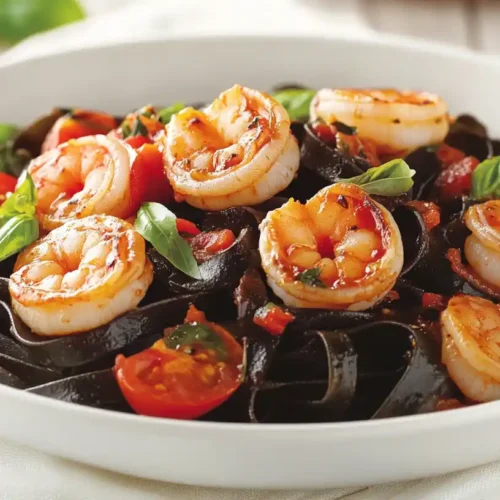
squid ink seafood pasta recipe
Ingredients
- 2 tbsp olive oil
- 2 tbsp butter
- 3 cloves garlic minced
- 1/2 tsp red pepper flakes
- 1/4 cup dry white wine
- 1/4 cup lemon juice
- 1 tsp lemon zest
- Salt to taste
- Black pepper to taste
- 1/4 cup fresh parsley chopped
- 1/2 cup grated Parmesan cheese
- 1 lb mixed seafood like shrimp, scallops, and squid
Instructions
- Heat olive oil and butter in a large skillet over medium heat.
- Add minced garlic and red pepper flakes, sauté until fragrant (about 1 minute).
- Add mixed seafood to the skillet and cook until just opaque and cooked through (about 3-4 minutes).
- Pour in dry white wine and lemon juice, simmer for 2-3 minutes to reduce slightly.
- Stir in lemon zest, salt, and black pepper to taste.
- Add the cooked squid ink pasta to the skillet, tossing to coat in the sauce.
- Mix in chopped parsley and grated Parmesan cheese.
- Adjust seasoning if necessary and serve hot.
